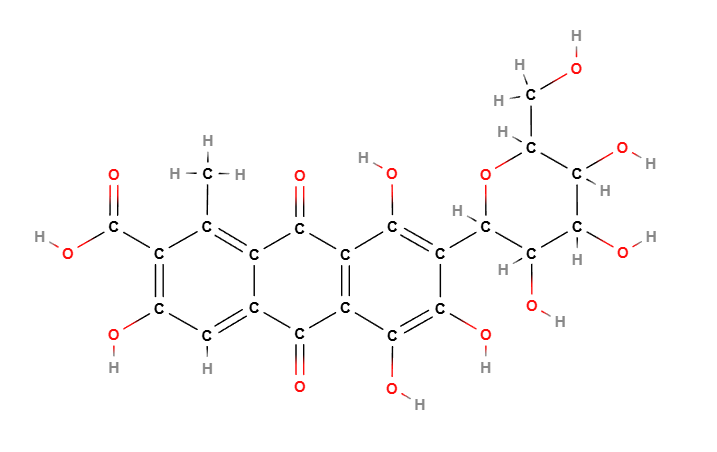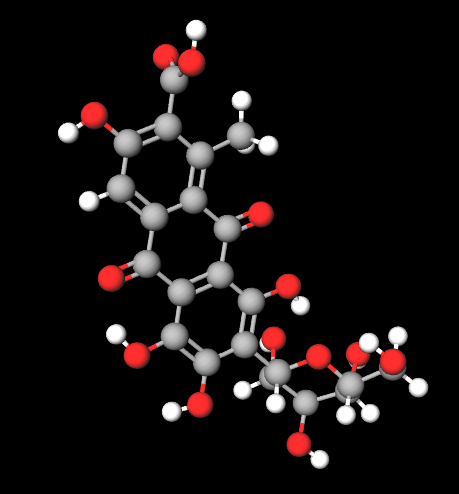| "Descrizione" by admin (19547 pt) | 2024-May-29 10:20 |
CI 75470 è un composto chimico, un colorante sintetico ed è conosciuto come Natural Red 4, Cochineal Carmine, E120. Colorazione rossa.
Può essere prodotto in via naturale dalla femmina della Cocciniglia (Dactylopius coccus) (1) prelevato dal suo corpo o dalle uova, oppure in via di sintesi chimica ed è il caso più comunemente osservato nei prodotti alimentari.
Nome chimico
3,5,6,8-tetrahydroxy-1-methyl-9,10-dioxo-7-[(2S,3R,4R,5S,6R)-3,4,5-trihydroxy-6-(hydroxymethyl)oxan-2-yl]anthracene-2-carboxylic acid
Processo di produzione industriale
- Preparazione dei reagenti. Le principali materie prime includono carminio (ottenuto dall'insetto cocciniglia) e solventi come acqua o alcool.
- Raccolta e pulizia. Gli insetti cochineal vengono raccolti e puliti per rimuovere impurità e detriti.
- Essiccazione. Gli insetti puliti vengono essiccati a temperatura controllata per ridurre il contenuto di umidità e facilitare l'estrazione del colorante.
- Macinazione. Gli insetti essiccati vengono macinati in una polvere fine per aumentare la superficie di contatto per l'estrazione.
- Estrazione. La polvere di cochineal viene trattata con un solvente adatto (acqua o alcool) per estrarre il carminio. L'estrazione può essere effettuata mediante macerazione, infusione o estrazione con solvente.
- Filtrazione. La miscela estratta viene filtrata per rimuovere i residui solidi e ottenere una soluzione limpida contenente carminio.
- Concentrazione. La soluzione colorante viene concentrata tramite evaporazione sotto vuoto per ridurre il volume e aumentare la concentrazione di carminio.
- Purificazione. La soluzione concentrata può essere ulteriormente purificata mediante tecniche come la cromatografia per rimuovere impurità indesiderate e migliorare la qualità del colore.
- Cristallizzazione. Il carminio purificato viene cristallizzato per ottenere un prodotto ad alta purezza.
- Stabilizzazione. Il carminio cristallizzato viene stabilizzato con antiossidanti come BHT (butilidrossitoluene) per prevenire l'ossidazione e mantenere la stabilità del colore durante il trasporto e lo stoccaggio.
- Essiccazione. Il prodotto purificato viene essiccato a temperature controllate per ottenere una polvere fine di carminio.
- Controllo di qualità. Il CI 75470 viene sottoposto a rigorosi test di qualità per assicurare che soddisfi gli standard di purezza, intensità del colore e sicurezza. Questi test includono l'analisi chimica, la spettroscopia e i test microbiologici.
A cosa serve e dove si usa
Cosmetica
Ingrediente cosmetico soggetto a restrizioni IV/115 come Voce pertinente negli allegati del regolamento europeo sui cosmetici n. 1223/2009. Sostanza o ingrediente segnalato:
- Carmines. Formulazione delle condizioni d'uso e delle avvertenze: criteri di purezza di cui alla direttiva 95/45/CE della Commissione (E 120)
Cosmetica - Funzioni INCI
Colorante. Questo ingrediente ha la funzione primaria di colorare la soluzione in cui è inserito in modo temporaneo, semi-permanente o permanente, sia da solo che in presenza dei componenti complementari aggiunti per la colorazione.
Fragranza. Ha un ruolo decisamente importante nella formulazione di prodotti cosmetici in quanto fornisce la possibilità di migliorare, mascherare o aggiungere profumo al prodotto finale aumentandone la commerciabilità. E' in grado di creare un odore gradevole percepibile, mascherare un cattivo odore. Il consumatore si aspetta sempre di trovare un profumo gradevole o particolare in un prodotto cosmetico.
Sicurezza
Vi sono controindicazioni per la salute legate all'uso di questo additivo.
In particolare sono state riscontrate allergie (2) e il Consiglio d'Europa ha consigliato un contenimento del livello delle proteine nell'E120 (3) con sistemi di purificazione (4).
 |  |
Formula molecolare: C22H20O13
Peso molecolare: 492.389 g/mol
CAS: 1343-78-8
EC Number: 215-724-4
FEMA Number: 2242
UNII CID8Z8N95N
DTXSID20859613
Synonyms:
E120
Cochineal Carmine
Natural Red 4
Bibliografia______________________________________________________________________
(1) Perez Guerra, G. and M. Kosztarab, Biosystematics of the family Dactylopiidae (Homoptera: coccinea) with emphasis on the life cycle od Dactylopius coccus Costa, in Studies if Morphology and Systematics of Scale Insects. 1992: Blacksburg, Virginia..
Abstract. The cochineal insects include nine species assigned to the genus Dactylopius, the only genus in the family Dactylopiidae. This is a review of all the species in the family Dactylopiidae, with special emphasis on the life cycle of the type species Dactylopius coccus Costa. The adult females of the nine species have been redescribed and illustrated, with a discussion on their morphological affinities and relationships. Their hosts, natural enemies, distribution, etymology, and role as biological control agents are discussed. For several species many new distribution and host records are given. Also, new types have been designated for the following species: one neotype and three paratypes for Dactylopius coccus Costa; one neotype for D. tomentosus (Lamarck); and designation of eight new topotypes for D. opuntiae (Cockerell). Methods are given on collecting, preservation, slide mounting, measuring, and preparing illustrations. Cuticular ultrastructure is shown in scanning electron micrographs. All developmental stages of the type species, D. coccus, are described. The life cycles under two temperatures and two relative humidities, for both males and females, are discussed. Aspects of reproduction in D. coccus, its dispersal methods, factors affecting development, and its economic importance are also included. A separate chapter deals with the host-plants of Dactylopiidae. This chapter includes data on host plant suitability and host plant resistance. Three identification keys are presented: one to the suborders of Homoptera, the other to the superfamilies and families of Coccinea, and another one for the determination of the species of Dactylopius. The phylogenetic relationships of the family Dactylopiidae with respect to all the Coccinea families are discussed, and a phylogenetic tree for the Dactylopius species is proposed.
(2) Shaw DW. - Allergic contact dermatitis from carmine. Dermatitis. 2009 Sep-Oct;20(5):292-5.
Chung, K., et al., Identification of carmine allergens among three carmine allergy patients. Allergy, 2001. 56(1): p. 73-7.
Acero, S., et al., Occupational asthma and food allergy due to carmine. Allergy, 1998. 53(9): p. 897-901.
Beaudouin, E., et al., Food anaphylaxis following ingestion of carmine. Ann Allergy Asthma Immunol, 1995. 74(5): p. 427-30.
(3) en_1995L0045_do_001.pdf, h.e.e.i.e.-l.e.c.p., CONSLEG 1995L0045-10/05/2004. 2004, Official Publications of the European Communities
(4) Scopes, R.K., Protein purification : principles and practice. 3rd ed. Springer advanced texts in chemistry. 1994, New York: Springer-Verlag. xix, 380.
| Evaluate |

